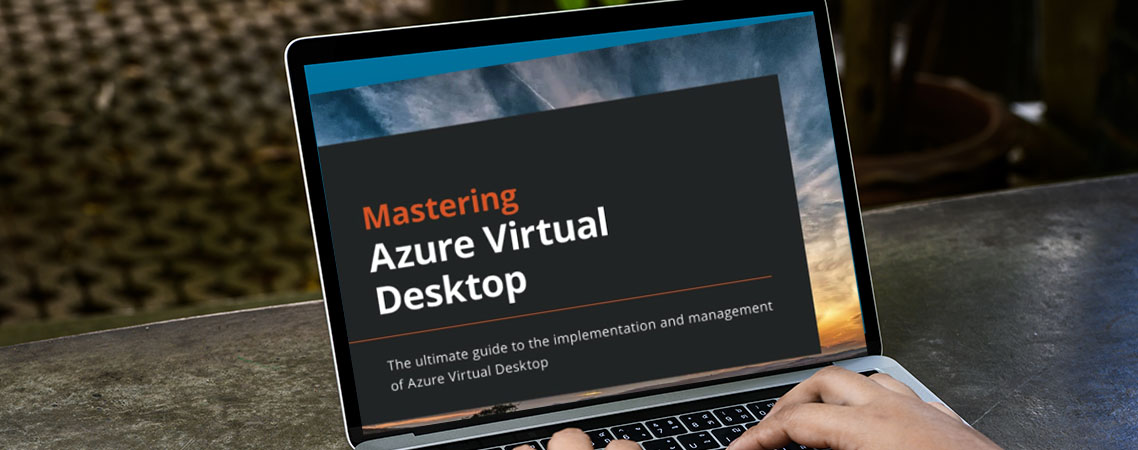
Discover the Advantages of Switching to Hybrid Cloud Computing
A hybrid cloud is a cloud-based environment that integrates public, private, and on-premises IT infrastructure with an orchestration platform that enables communications between distinct services.
It is a powerful cloud strategy that gives businesses greater agility and control over their data.
The hybrid cloud has slowly emerged as the default cloud computing model for most organizations because it creates a single, flexible, and cost-effective IT infrastructure.
As of July 2023, 64% of leading IT professionals reported that their organizations had already implemented a hybrid cloud approach, with 49% citing the increased flexibility as their reason for switching. Enhanced security was listed by 46% of respondents, and 45% reported increased cost savings with the hybrid cloud.
In this post, we’ll explore the advantages of hybrid cloud computing and how Parallels® RAS cuts through the complexities surrounding hybrid cloud architectures.
Definition of Hybrid Cloud Computing
To help us understand what hybrid cloud computing is, let’s first explore the differences between public and private clouds.
Public Cloud
This is an IT model where a cloud service provider (CSP) uses the public internet to share and deliver on-demand IT resources such as virtual machines (VMs), applications, and storage. A public cloud allows organizations to share resources in a scalable manner that would not have otherwise been possible for a single company to attain.
A public CSP may offer different cloud computing services, including Infrastructure as a Service (IaaS), Platform as a Service, and Software as a Service (SaaS). Some CSPs provide some IT resources for free, while customers pay for other services via a subscription or a pay-as-you-go pricing scheme.
Private Cloud
A private cloud—also called the corporate or internal cloud—is a cloud-based environment where a CSP dedicates all the IT resources to a single customer instead of sharing it with the general public. It combines many of the advantages of the public cloud—including scalability and self-service—with access control, resource customization, and the security of an on-premises IT infrastructure.
Unlike public clouds that rely on multi-tenant architectures, private clouds are single-tenant environments where all the IT resources are accessible exclusively to one customer. While most private clouds are hosted on-premises in the organization’s datacenters, you can also use an independent CSP to host the IT resources in an offsite datacenter.
Hybrid Cloud
A hybrid cloud integrates private, public, and on-premises IT infrastructure services with orchestration and management capabilities between these platforms. Typically, this involves deploying workloads in private or public IT environments and moving them as computing requirements and costs change.
This results in a unified, agile computing environment where an organization can efficiently run and scale its cloud-native or traditional workloads using the most appropriate cloud computing model. The phrases “hybrid cloud” and “multi-cloud” are sometimes used interchangeably, although they carry different meanings.
A hybrid cloud merges an on-premises IT infrastructure service with private and public clouds to create a single cloud-based environment that combines the best of both strategies. On the other hand, a multi-cloud strategy involves using two or more CSPs to handle various business tasks. For example, an organization could use Amazon Web Services (AWS) to perform some tasks and Azure to perform another set of functions.
In the past, most hybrid cloud architectures relied on mechanics that could transform an organization’s on-premises datacenter into a private cloud setup. This infrastructure could then be connected to a public cloud environment hosted off-premises by a public CSP such as AWS or Azure.
Organizations achieved such environments by leveraging a sophisticated enterprise middleware that integrated workloads across different environments to provide a unified management layer for allocating and managing resources. However, today’s hybrid cloud architectures are less focused on physical connectivity.
Instead, these infrastructures are increasingly supporting the portability of workloads across heterogeneous cloud environments and automating the deployment of services to the best cloud-based environment for a given business task. One trend driving this shift is the increasing adoption of micro-service architectures and containerization.
Advantages of Hybrid Cloud Computing
A hybrid cloud strategy offers numerous benefits to organizations, including:
- Greater cost savings. Some enterprise workloads will always require on-premises IT infrastructure, so an organization may decide to build a private cloud with onsite systems that are fast and flexible. Meanwhile, the company can choose to host other non-critical workloads and data in the public cloud to take advantage of subscription-based pricing models. Merging private and public clouds into a seamless and consistent hybrid cloud environment allows organizations to migrate workloads easily and as cost benefits allow.
- Enhanced business agility. New business opportunities, accelerated time-to-market, and competitive advantages usually rely on rapid IT infrastructure deployment to support activities such as workload provisioning, application testing, and migration. A hybrid cloud deployment model is a better option to achieve such agility. For example, IT administrators can provision and scale resources easily on a private cloud and then move such workloads to a public cloud when business needs and costs change.
- Enhanced security and compliance. Some workloads and data require an on-premises setup to meet security and compliance standards, especially in highly regulated sectors such as banks and hospitals. Organizations operating in such industries with a hybrid cloud can store their data in a private environment while hosting other non-critical workloads in public clouds. This can allow them to meet the strict security and regulatory requirements while still taking advantage of the cloud’s elasticity benefits.
- Enhanced flexibility and control. Instead of placing all facets of the organization’s IT infrastructure into the hands of a third-party CSP, a hybrid cloud allows you to customize the private side of the cloud model to suit the requirements of the enterprise. IT teams will also find it easier to adjust which aspects of the IT infrastructure should handle each workload. This gives them the necessary controls they need to avoid complicated and costly processes associated with purely private or public cloud environments.
Challenges in Hybrid Cloud Models
Despite the benefits that the hybrid cloud provides, there are challenges that organizations need to consider. Below are a few of them:
- Security complications. Moving data and workloads from an on-premises datacenter to public clouds is not only a time-consuming and resource-intensive process but can also be riddled with security challenges. For example, data that passes between different cloud-based environments is vulnerable to distributed denial-of-service (DDoS) and other man-in-the-middle (MITM) attacks. Also, in workplaces where employees access data from on-premises or private clouds, there can be many security risks, such as detecting hidden vulnerabilities in heterogeneous endpoints.
- Bottleneck risks. Public clouds rely largely on the public internet, which can be notoriously slow. As such, a network bottleneck can occur when moving workloads between private and public clouds. This can impact performance significantly, especially for mission-critical applications that require high network throughputs.
- Visibility challenges. Gaining visibility over hybrid cloud environments can be complex because of different cloud environments. Under such an environment, some cloud-based resources can easily become “opaque containers” that are invisible to IT administrators. These blind spots may limit the organization’s ability to control performance and security.
Use Cases for Hybrid Cloud Computing
Usually, organizations deploy hybrid cloud architectures to take advantage of the benefits of both private and public cloud environments. However, a hybrid cloud is an architectural model better suited for certain use cases. Let’s explore a few of these use cases.
Digital Transformation
Organizations tend to view cloud computing as a way to modernize their IT infrastructures for digital transformation. However, some legacy systems or compliance factors can hinder an organization from shutting down an on-premises datacenter entirely. Hybrid cloud architecture allows such organizations to transition parts of their IT infrastructure to the public clouds while retaining some workloads in private clouds. For example, banking and financial institutions can use the elasticity of public clouds to develop new applications while storing confidential data in private clouds.
High Availability and Disaster Recovery
Achieving a geo-redundant and highly available environment can be costly in private cloud deployments, and most companies are reluctant to absorb and justify such expenses. A hybrid cloud can allow organizations to promote high availability (HA) and disaster recovery (DR) by replicating on-premises data and backing it up in the public clouds. Whenever there’s a disruption with the on-premises datacenters, workloads can fail-over to the public clouds quickly and operate seamlessly via on-demand cloud resources. This can result in significant, dramatic improvements in workload availability and DR strategies.
Exploring a Cloud Stack
Sometimes it’s unclear to what degree an application will serve the organization’s needs. A hybrid cloud can allow an organization to try out various cloud tools before committing to adopting a particular CSP stack. In this regard, an organization can explore the ramifications of migrating workloads back from the cloud—if required—before binding to a more full-fledged deployment.
Data Processing
Organizations can leverage hybrid cloud architectures and take advantage of data processing tools while addressing governance, risk, and compliance (GRC) requirements that maintain workloads and data in on-premises setups. For example, data-intensive operations in e-commerce businesses can leverage robust public cloud services to run periodic analytical queries on data that lies on-premises. In addition, hybrid cloud architectures can offer e-commerce enterprises the scalability and security they need to run unpredictable workloads during sales spikes and other seasonal peaks.
Expanding Footprint
Hybrid cloud architecture can allow an organization to support compute- and storage-intensive workloads, such as analytics, high-performance computing (HPC), and data warehouses. For this use case, an organization could start small and satisfy its cloud curiosity at a lower cost. If the prototype fails, you simply pay for the computing resources you’ve consumed and move on. On the other hand, if the prototype succeeds, you can easily scale up and out whenever the requirements change.
Decide if Hybrid Cloud Computing Is Right for Your Business
Not every workload belongs to the public or private cloud, which is why modern businesses embrace hybrid cloud infrastructures. However, like any business decision, a hybrid cloud option can make sense only if you’ve defined the organization’s exact needs, priorities, and budget. Below are some questions that you need to figure out when considering a hybrid cloud solution:
- Does the organization use dynamic or frequently changing workloads? If so, a hybrid cloud solution can help leverage the scalability of public clouds for dynamic workloads while leaving more sensitive workloads in the on-premises datacenter or private clouds.
- Does the organization want to isolate sensitive workloads from less sensitive applications? If this is the case, consider hybrid cloud architecture and use public clouds to run less sensitive workloads while running critical workloads in the private clouds.
- Does the organization require big data processing capabilities? A hybrid cloud solution can help run big data analytics using scalable public cloud resources while leveraging private clouds to provide security capabilities.
- Do you want to transition to the cloud via incremental steps (at your own pace)? If this is the case, you could run some workloads on a private or small-scale public cloud and see how it works for the organization. Depending on the organization’s requirements, you can continue expanding the cloud presence.
- Do you require a cloud solution for temporary processing requirements? A hybrid cloud enables the company to allocate public cloud resources for short-term projects, often at a lower cost than on-premises IT infrastructure. This way, you minimize expenses associated with buying and maintaining expensive equipment that you’ll need only temporarily.
Reap the Benefits of Hybrid Cloud Computing with Parallels RAS
The virtualization movement and subsequent cloud computing technologies have drastically changed how organizations protect and deliver workloads to an ever-increasing mobile workforce. Today, many businesses have embraced hybrid cloud solutions to combine the benefits of both public and private clouds and maximize value, cut costs, and modernize how workloads are delivered to users.
While adopting these solutions provides myriad benefits, they also introduce additional layers of complexity in deploying and managing workloads. A virtual desktop infrastructure (VDI) solution such as Parallels RAS can help you cut through the complexities associated with hybrid cloud architectures.
Parallels RAS has been designed as a cloud-ready solution that organizations can leverage to deliver any Windows-based workload into a cloud service across any network to any endpoint. By deploying this expanded VDI solution, organizations can take advantage of various cloud deployment models easily while leveraging the platform’s automation and orchestration capabilities.
With its pre-built configuration wizards and templates, Parallels RAS is easy to set up, and any non-technical user can get it up and running within a few hours.
Try out Parallels RAS today to start reaping cloud computing benefits!

